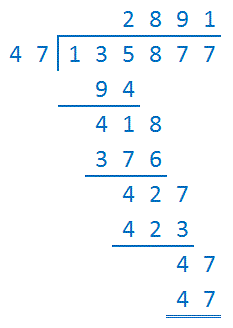Oh dear, someone has vandalised this long division.
They've replaced every digit either with a wrong digit or a hyphen.
Your task: reconstruct the entire thing. There's no remainder.
Please show all work. Use of a computer is not allowed.

Please note the following :
None of the digits in the puzzle, is correct.
None of the numbers has a leading 0. This means that the actual numbers that replace 29, 86,96 and 35 are all two digit numbers as well, the actual numbers that replace 2_ _, 125, 3 _ _ and 248 are all three digit numbers themselves, the actual number that is there in place of 16_2 is a 4 digit number and the actual number that replaces 00 _8 is a 6 digit number.
Let's say that 2 in the divisor, 29, is actually supposed to be 7. Then it is not necessary that all the 2s present in the image above will be replaced by 7. It can be that one of the 2s gets replaced by 7 and another 2 gets replaced by 3. Same is true for the other digits in the image : 0,1, 3…9. They each can be replaced by different digits at different places.



